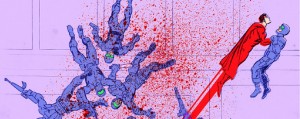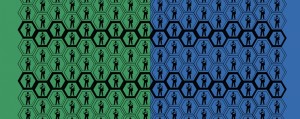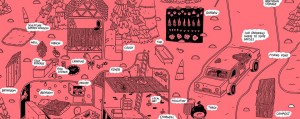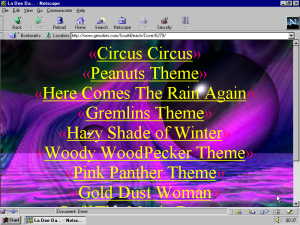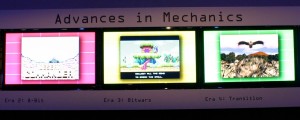Underground cartooning has always been a strangely self-obsessed business. From Robert Crumb’s examinations of his own sexual neurosis to later exponents like Sammy Harkham’s in-jokes about the minutiae of strip creation and the circles of friends and antagonists it brings with it, one of the ways that the medium’s avant-garde distances itself from the comic book mainstream has been through lacerating self-analysis and uncomfortable, often obscene humour. A humour that regularly reveals surprisingly complex emotional truths.
Simon Hanselmann‘s Megg and Mogg strips – available for all to see on his excellent and frequently updated tumblr – continue squarely in this tradition. The stories are based around the misadventures of the titular children’s book witch and her cat. All grown up, they’ve crashed into adulthood without a clue as to how to respond other than by getting stoned, watching endless TV reruns and indulging in cruel pranks, often at the expense of their long-suffering housemate, Owl.
On first glance one could interpret their blank-eyed response to the world as an end in itself. An opportunity for Hanselmann to indulge in as many numbed, scatological yucks as he can cram onto the page, but further reading also reveals a bruised underside. A real pain amongst all the hollow laughter as the endless circle of drugs, pettiness and fun-that-just-isn’t-that-much-fun builds up.
Take the standalone strip, ‘Megg’s Depression’. Seven near identical panels of Megg’s head against the pillow, distinguishable only by the different positions of her strands of hair, before an inky gunk starts pouring from the mouths of three sinister, floating female heads around her bed, eventually blocking out the room and staining the panel a deep, impenetrable black. A simple metaphor, certainly, but one that brings perspective to her cynical antics throughout the proceeding strips, throwing sharp relief onto the character’s psychology and the root of her narcissistic behaviour.
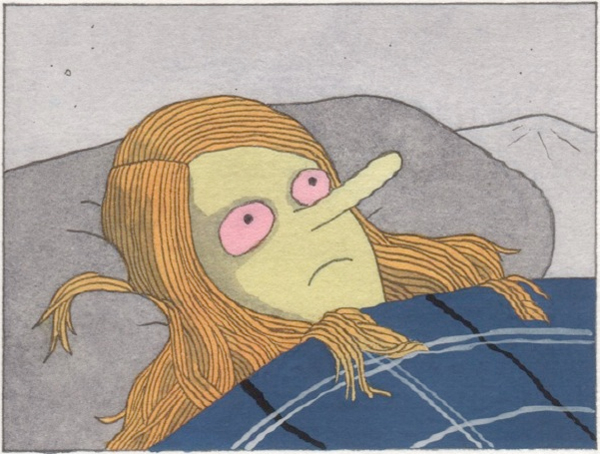
Of course, all of this would be just so much angst if the strips weren’t funny, but thankfully, funny they are and frequently hysterically so. Hanselmann is a master of the silent panel, using wordless expression to allow the reader to register feelings of disgust, shock and bewilderment, before ploughing on into another mess of beautifully rendered disarray. The art style is cartoony, certainly, but the emotions depicted are vividly real. He also has a tight grip when it comes to depicting suburban boredom -the identikit buildings that characters stroll past on their way to the video store, the tiny shafts of light that cut through a filthily curtained window –and he uses this limited palette to explore a yawning chasm of alienation, guilt and shifty, uncomfortable hilarity.
While the singularity of Hanselmann’s approach neatly ensures that he won’t be seen as an inheritor of anyone’s mantle any time soon, his commitment to his subject matter carves him out as the latest in a long line of great cartoonists dealing squarely with the pressures of enforced adulthood on the adolescently-minded. It’s the shocking mess that can get left behind when we try, and fail, to grow up too fast and too late.
Simon Hanselmann’s Megg and Mogg strips can be viewed on his Girl Mountain tumblr.
